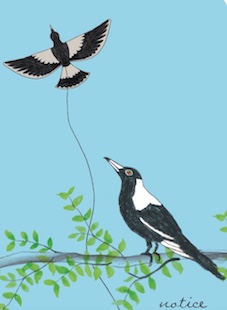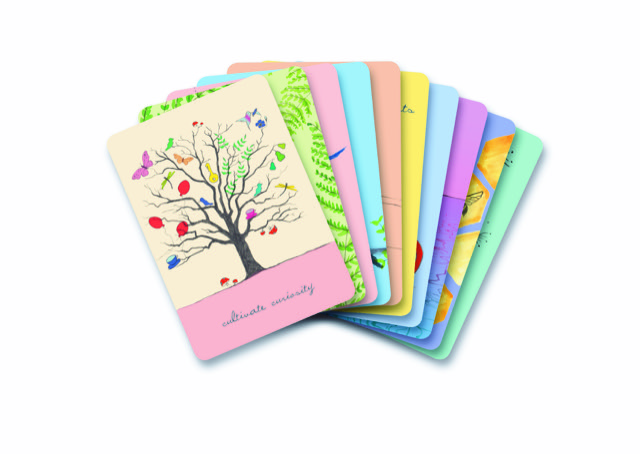‘I love the idea of using an inquiry approach, but it takes so much time’
‘It’s just been so busy, we are all so pushed for time’
‘We really wanted to give the kids the opportunity to follow up their own questions, but we just ran out of time’
‘The day just goes. It's madness here!’
I’d love to follow this up and go with the kid’s interests but this term we have got the production, NAPLAN testing, interschool sport, the Mothers’ day stall and we are doing this new wellbeing program….we just can’t fit it in.
‘We are required to do x amount of maths/English and we have lots of specialists so….how do we fit it all in?’
‘If only we had more time…’
Sound familiar?
It’s VERY familiar to me! I regularly hear this kind of talk as I work with teachers. To be honest, the most common response I get when I ask the open question ‘How are you today?’ is…. ‘BUSY!’ And I’ve probably said all this stuff too. I find myself too often complaining about being time poor….so this post is NOT me getting on my high horse and telling you all to manage your time better! I acknowledge that there are some fixed elements in our day/week/year that we have little control over . There are things that do indeed take time we would prefer to use in other ways (*cough*NAPLAN). But this persistent sense that we are too busy and there is too much to do really does get in the way. It gets in the way of quality planning/dialogue between teachers and it gets in the way of good teaching and learning. From my perspective as a champion of inquiry, the perception that there is ‘not enough time’ even gets in the way of some people’s willingness to engage in the approach. Perhaps we simply need to have more conversations about how we can make time our friend rather than our enemy. I have a hunch that both our and our children’s wellbeing depends on it.
With that in mind, Late last year, I asked a group of teachers to ponder this very issue. As a provocation, I offered them a challenge:
You have 6 hours. A typical school day. Now imagine that you can decide HOW you will use that time. No set curriculum, no bells, no ‘must dos’. Your only goal is to design the day in a way that you think will provide a really rich, powerful day of learning. What might that day look like?
On reflection, I wish I had photographed the ‘dream days’ that these teachers created. I wish I had been able to get across the palpable sense of delight and engagement that we felt as we designed our days. Some teachers created something collaboratively, others worked on their day on their own but all teachers took to the task with gusto! When we were done, we shared our days with each other and noticed some fascinating, common themes right across grade levels and specialists.
Soft starts: The days tended to start gently. Easing into the day with shared stories, time outside, play, tinkering, games. We valued ‘soft starts’ and a sense of welcome and delight.
The outdoors: Almost everyone designed days that included much more time out of the classroom than they currently had. The outdoor environment was a big part of our designs including school grounds, local parks and other places. We valued the role of the outdoors in stimulating curiosity, staying healthy and learning about the world, IN the world.
Reflection and connection: Almost everyone included a moment in the day when learners would gather together to talk, reflect, share. We clearly valued shared reflection, time to ‘press the pause button’ and process experiences
Flow and integration: A key feature of many ‘dream days’ was the integration of learning areas. Opportunities for writing emerged from direct experiences, mathematical learning was connected with real problems and contexts. People wanted flow …. No-one designed a day with neat, short, separate periods of disconnected learning. We valued connections.
Learner choice and co construction: So many of our dream days featured the involvement of learners in determining aspects of their learning for the day. Wonderings were gathered, choices were offered, personal goals were set. We valued choice.
Links to the community: Many days included connections with experts or people from the community. There was a sense that the ideal day would not be so disconnected from the wider community
Taking breaks: Interestingly, several people extended the time currently set aside for a lunch break and made it more of a shared meal – teachers and children eating and talking together. A few people got so excited about their day they realised they had forgotten to give themselves a break at all! Other teachers dispensed with the idea of a ‘set break’ and created a day in which breaks would be taken as needed.
Relationships and sharing: Music, circle games, powerful literature all featured heavily. Almost every teacher included a time to connect with each other through a shared text or experience.
The whole experience got us wondering.
Why is there often such a gulf between the way we would love to work with our students and the way we DO work?
How can we bring the reality and the ‘fantasy’ (if you can call it that) closer together?
How can we use our time in ways that we feel are most powerful and productive AND maintain accountability to the things that are expected of us?
And what really IS expected of us and what have we invented or convinced ourselves we ‘have to do’ when, in fact, no one has ever said we have to do it!
Why do we so willingly let go of what we value and know about effective learning to do things that are unnecessary and unproductive? Why don't we challenge ourselves more?
How can we help ourselves unlearn old ways of carving up the day into fragmented pieces and see our ‘scheduling’ in fresh ways?
Perhaps the first step in rethinking the way we use time is to address it head-on through an open, collaborative conversation. This is a very worthwhile professional inquiry to undertake as a staff. Late last year, I posed the question via twitter and received around 80 responses from educators about ways to better manage time. Advice ranged from ways of thinking about time itself to practical strategies for prioritizing and ‘culling’ programs to allow for more space and depth. You can read this excellent thread of advice here:
https://twitter.com/kjinquiry/status/1072803646469885954
When it comes to an inquiry oriented stance, the way we perceive and manage time is critical. Fragmented, rushed, over-crowded and regimented timetables work against deep learning. Pondering questions, considering ways to investigate, navigating a range of sources, carefully analysing information you have gathered, considering ways to apply new learning and regularly pausing to reflect, review and rethink does indeed take time. But it is time so well spent. When engaged in deep inquiry, learners are building their ‘learning muscles’, growing their learning assets, strengthening their capacity to ‘figure things out’ and exercising their agency. These are precious, highly valuable outcome that deserve the time they need! And here’s the interesting twist. When we do this well – when we design learning opportunities that allow learners to dive deep into questions of significance to them, they use their time more productively and make multiple connectionsacross the curriculum – two vital keys to managing time.
As has been observed by many, being ‘too busy’ seems to be worn as a badge of honour these days. These are speedy times. Our lives (mine included) and the lives of many our children are full and fast paced. The danger, of course, is that we bring an unwelcome and unhelpful sense of urgency into our teaching. Our kids sense the panic as we rush to ‘get it all done’, we forgo the game we thought we would play ‘if we have time’, we ignore the sudden interest in the lightening storm out the window because they have to finish the maths task, we resort to too much ‘telling’ rather than allow time figure things out. The hurried classroom leaves little space for true inquiry and indeed for deep, satisfying learning
So. What do we do? Well – check out the twitter thread and all the pearls of wisdom that have been shared there. But I’ll leave you with a few key things I try to remind myself, not always successfully - but I try…
Practice being mindful. I know it is almost a cliché but it REALLY helps me teach better! Be fully present. Keep your mind on the learning that is happening right now. Not all the things to come. Just be in the now.
Be consciously calm as you teach. Slow down. Allow space for quiet. Teach with intention. Amazingly, slowing down can actually result in getting more ‘done’.
Remember - we all have the same 24 hours each day. We have a lot more choice over how we use them than we think. Take a good look at what you and your kids spend time doing over the week. Make it a shared inquiry! Cull your program in the same way you might regularly cull your wardrobe. Why DO you have the routines that you do? Are they worthwhile? Do they align with your beliefs about teaching and learning?
And keep resisting the urge to plan too much too soon. If you commit to being more responsive your to learner’s needs and interests, you will be teaching ‘just in time’ rather than doing a whole lot of unnecessary stuff’ just in case’!
Know your curriculum! Know it so well that you can easily make connections between learning areas. Deep, authentic integration is such a powerful way to use time more productively.
There is so much more I could say….but I’ll leave it there. I know you’re busy and may not have the time to read much more…
How do you give yourself and your students the time that true inquiry deserves…?
Just wondering.



